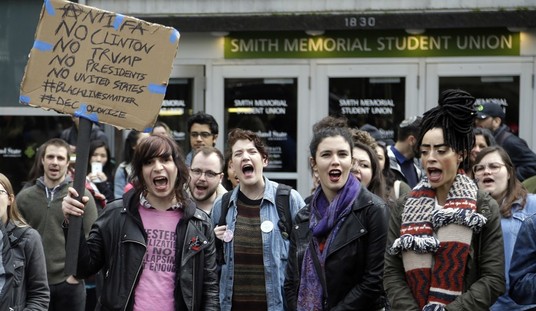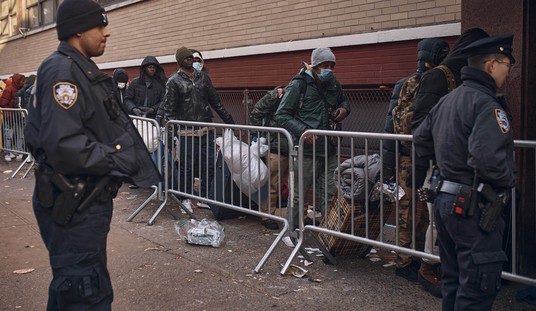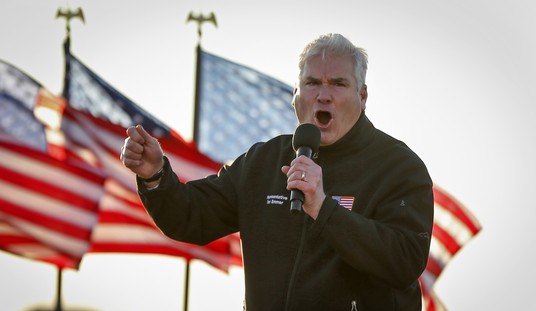Live by the S&P 500, die by the S&P 500. Less than a week after Donald Trump used stock market growth as an argument for his economic policies, the Dow Jones and other indicators took a plunge in the most recent two trading days. Friday saw the Dow Jones tumble by more than 600 points, but that was just an appetizer for today’s wild ride:
.@ABC NEWS SPECIAL REPORT: Dow Jones drops more than 1,100 points, an over 4% loss, wiping out gains for the year. https://t.co/6MUAViFJZi pic.twitter.com/O6etmcoxL5
— ABC News (@ABC) February 5, 2018
The Dow Jones Industrial Average plunged 1,175 points on Monday, its largest one-day point drop in history, to close at 24,345, a decline of 4.6 percent.
At one point the Dow was down more than 1,500 points, before slightly rebounding at the closing bell.
The previous record decline for the Dow came on Sept. 29, 2008, when it fell 778 points.
Commentators wasted no time in contrasting today’s drop with Trump’s speech last week. In his State of the Union address, Trump took credit for a massive expansion in the markets as an indicator of his personal impact on the American economy:
Small business confidence is at an all-time high. The stock market has smashed one record after another, gaining $8 trillion in value. That is great news for Americans’ 401k, retirement, pension, and college savings accounts.
Oopsie! Or is it? Lost in some of the reporting — but not all of it — is a sense of perspective. The DJIA took its biggest one-day hit in history on points. As a share of market capitalization, however, it’s not even among the bottom five worst days:
But the overall pullback was only 4.6 percent, not record-setting on a percentage-wise basis. The S&P 500 would have to drop 7 percent or more to trigger a halt in trading, and it would have to drop 10 percent or more to be considered a “correction.”
We’re not even close to “correction” range yet, and even that wouldn’t necessarily be an entirely negative event:
“Yes, investors should be mentally prepared for more downside,” said Mitchell Goldberg, president of ClientFirst Strategy, although he added that he didn’t expect the major indices to fall more than another 1 to 3 percent in the near term.
Other experts said that the long bull market could leave stocks open for a more sizable setback. “Corrections of around 10 percent or so are really quite common,” said Martin Baily, a senior fellow at the Brookings Institution. “It wouldn’t be a surprise… particularly when the market has grown as strong as it has for as long as it has.
The DJIA was at 19,827.25 on the day Trump was inaugurated; it was at 18,847 the week he won the election. Even after today’s beating in the market, the DJIA is up 22.7% since January 20, 2017. It would have to slide almost 5,000 points to get back to the status quo ante. Even a correction of 20% would still leave the stock market ahead of where it was when Trump first took office. That wouldn’t be pleasant by any means, but it won’t do damage to long-term investors as much as it would to speculators. If the too-big-to-fail institutions spent more time as the latter rather than the former, that could turn into a much bigger problem.
But is a financial panic likely? Not really, at least in the short term, given the economic fundamentals in play at the moment. Wage and job growth look good, consumer spending continues to grow, and businesses have announced massive investment in domestic operations. The problem at the moment is that Wall Street appears to have gotten ahead of itself, driving up valuations irrationally. That, combined with a change of leadership at the Fed and its more aggressive position on tightening the money supply, appears to have sparked a more rational assessment of valuations. That may give a few bad headlines, but in the long run, it’s a healthy development.
One lesson to learn from this is to keep from tying the success of economic policy so closely to stock-market performance. However, Trump didn’t really have much choice until recently; Congress only passed tax reform in December, the only major Trump economic policy to become reality. Trump has plenty more to brag about now, and he knows it. Even in that SOTU address last week, Trump only mentioned the stock market once. He emphasized job growth, wage growth, and business investment far more. If this teaches Trump a lesson, it will have been a very inexpensive one.








Join the conversation as a VIP Member